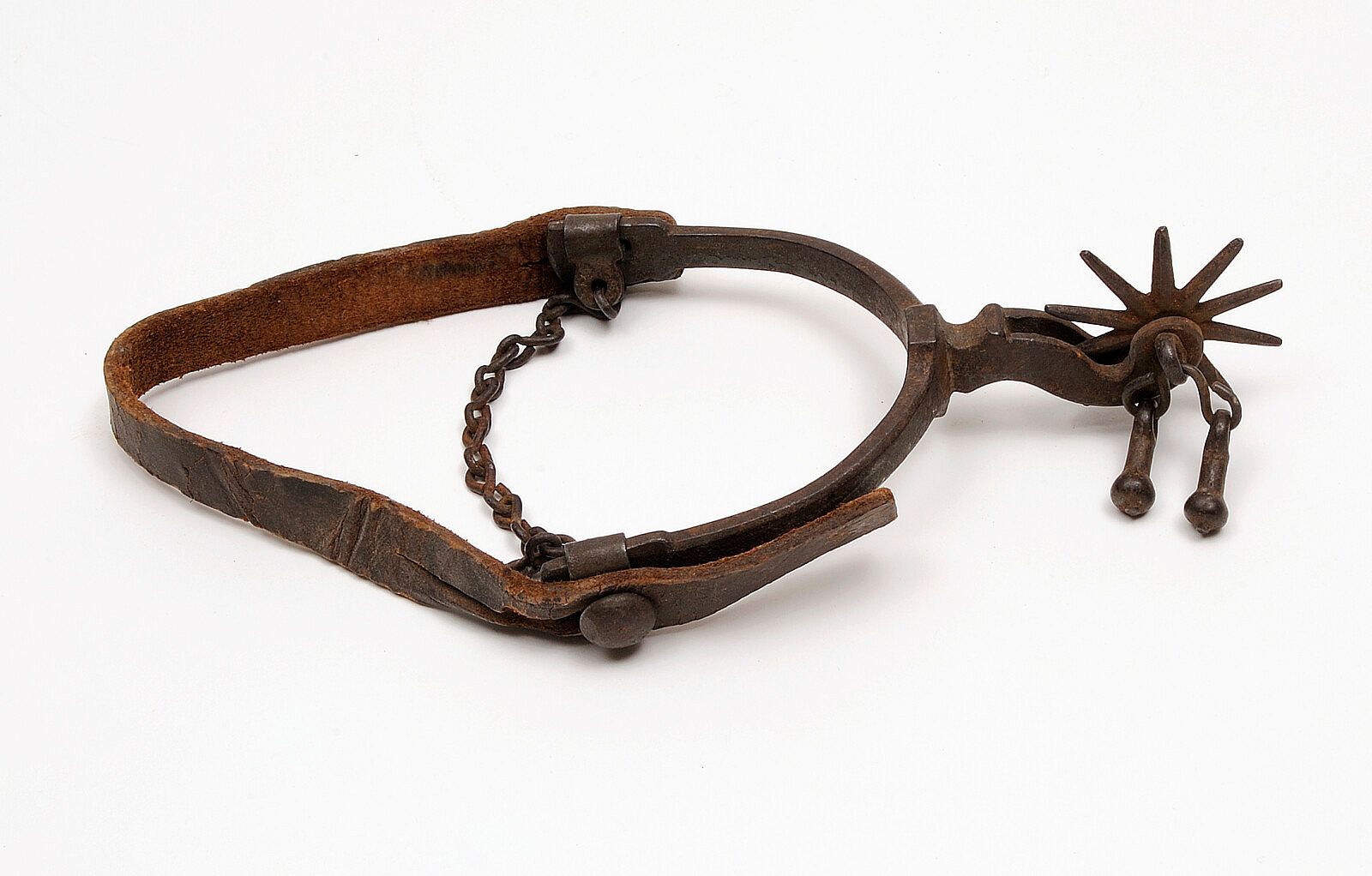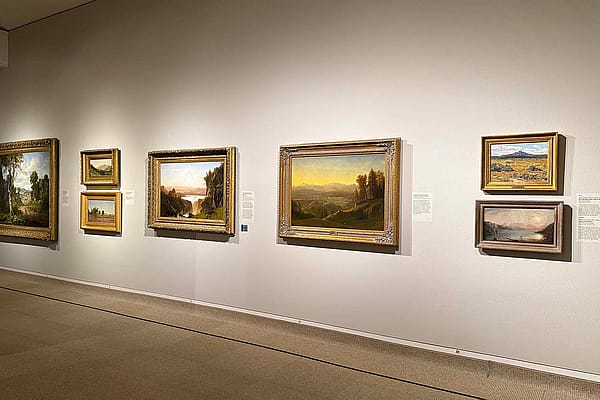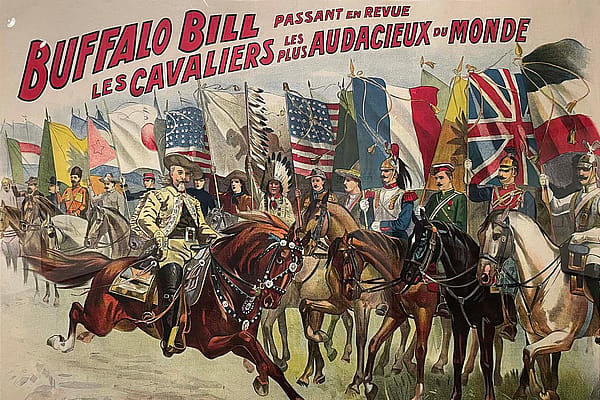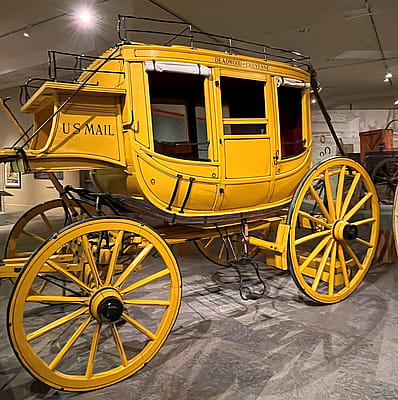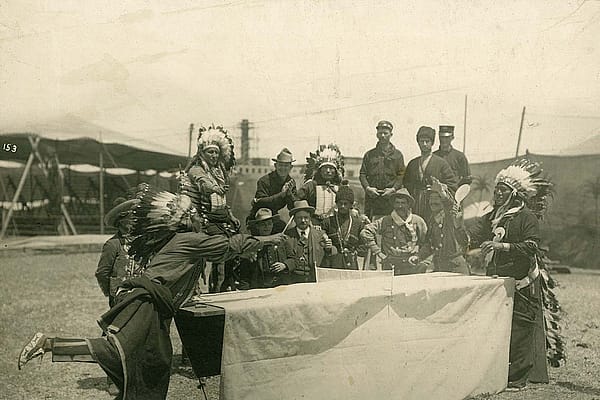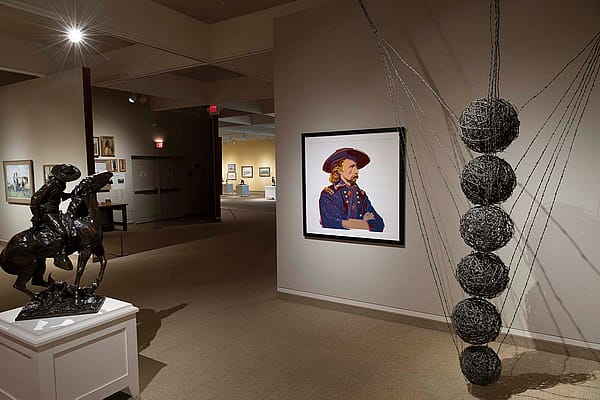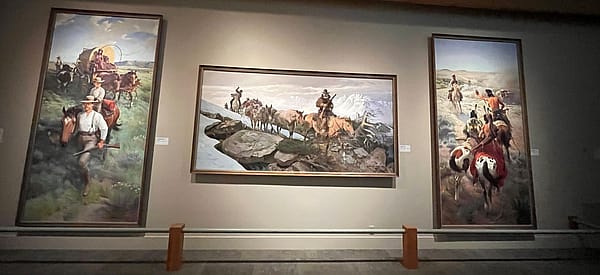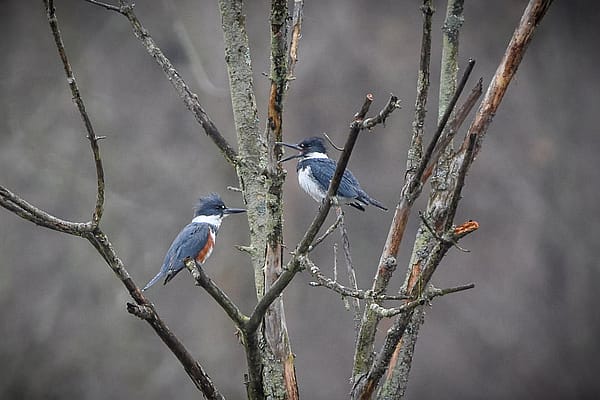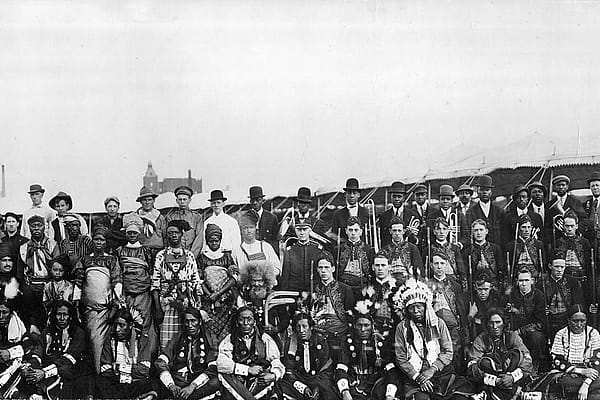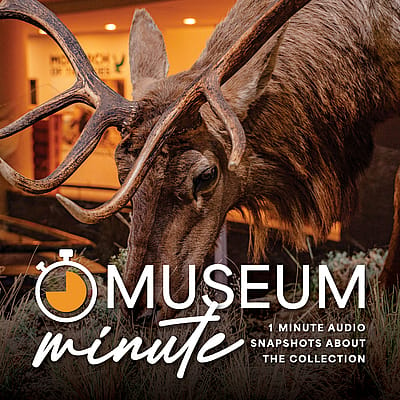
Earn Your Spurs – Points West Online
Originally published in Points West magazine
Spring 2023
The Way West: Earn Your Spurs
By Jim Arndt
William F. “Buffalo Bill” Cody wore spurs as both practical tools of his trade and as ornamental elements of his Wild West costume. For cowboys throughout history and to the present day, spurs have long presented dual elements of function and fashion.
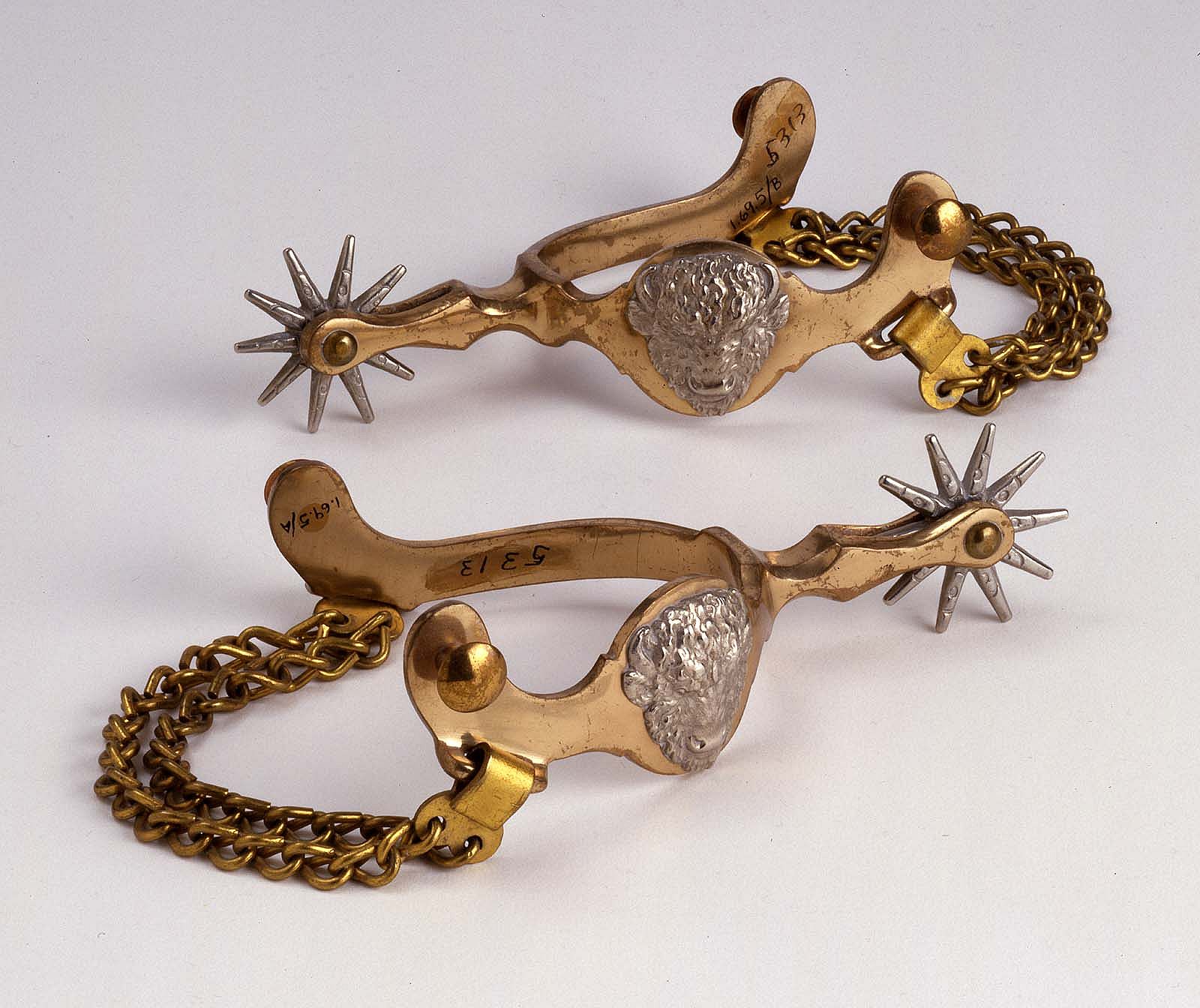
The Spanish introduced them to North America in the 1500s. The styles have changed since then, when the rowels (rounded discs or spikes) on those early spurs could reach a circumference of six inches or more.
The Spanish influenced Mexican spur makers, who became masters of the craft. Many cowboys crafted their own, while other spurs were made in small shops, larger factories, or even prisons.
The spur is designed to fit on the heel of riding boots. It is secured with a buckled strap, usually leather, that attaches over the top of the foot. The cowboy will brush the spur against the horse’s flank, often along with verbal commands, generally directing or encouraging the horse to action.
Like belt buckles, fancy spurs are sometimes awarded to rodeo champions, giving rise to the expression of “earning your spurs.”
Western-style cowboy spurs have rowels—sometimes a spinning wheel or disc—attached at the tail end of the shank. Rowels are typically round, but can also be in the shape of a flower, star, four-leaf clover or other configuration, like a series of spikes. Some cowboys have even used silver dollars for rowels.
Sometimes a cowboy might attach a pair of jingling pendants (known as jingle bobs) to his rowel pins to make a little extra music when he walks.
The shank (the slightly curved piece of steel between the rowel and the heel band that wraps around the back of the boot) can either be plain or have a more interesting shape, such as a snake.
Spurs can be utilitarian to meet the needs of a working cowboy, or they can be beautifully artistic, dictated by the taste of the cowboy and the skill of the maker.
Spurs might sport additional decorations on the outside of the heel band, on the button that the spur strap hooks onto, or even on the chap guard, which is a small protrusion that keeps the chaps from getting entangled in the rowel.
Popular decorative elements might include longhorns, stars, moons, hearts, brands, and initials.
Hand-forged steel spurs can be inlaid with copper, brass, silver, or gold, and may include turquoise and other stones.
Whether they are antiques or modern masterworks, spurs help express a cowboy’s personality and communicate with a horse. They have also become collectible and coveted artifacts, and even one-of-a-kind works of art. Giddy-up!
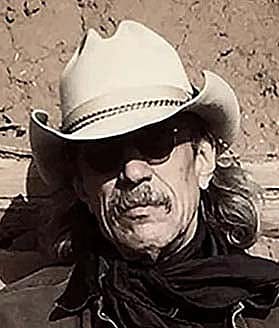
About the author
Jim Arndt is a nationally recognized commercial and editorial photographer and author of the books The Cowboy Boot Book, and The Art of the Boot. Excerpted with permission from Arndt’s How to Be a Cowboy.
Post 355
Written By
Nancy McClure
Nancy now does Grants & Foundations Relations for the Center of the West's Development Department, but was formerly the Content Producer for the Center's Public Relations Department, where her work included writing and updating website content, publicizing events, copy editing, working with images, and producing the e-newsletter Western Wire. Her current job is seeking and applying for funding from government grants and private foundations. In her spare time, Nancy enjoys photography, reading, flower gardening, and playing the flute.
